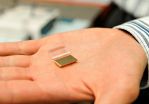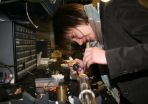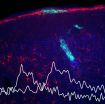(Press-News.org) VANCOUVER ─ Different ethnic groups have widely varying differences in both the prevalence and awareness of cardiovascular risk factors, a finding that highlights the need for specially designed education and intervention programs, according to a study presented today at the 2014 Canadian Cardiovascular Congress.
The conclusion comes from a study of more than 3,000 patients at an urgent-care clinic serving an ethnically diverse area of Toronto. Participants were asked to self-identify their ethnicity and, from a list of 20 activities or conditions, asked to identify which ones they believe contribute to cardiovascular disease (heart disease and stroke). They were also then asked if they had any of a variety of cardiovascular risk factors.
Previous research has shown that those of African or South Asian descent are more likely to have high blood pressure and diabetes, and therefore are at greater risk of heart disease and stroke than the general population.
In this study, the self-reported prevalence of risk factors tended to be higher in the non-Caucasian groups, with the exception of significantly lower levels of smoking in non-Caucasians.
Among the findings:
South Asians reported much higher rates of diabetes and sedentary lifestyle but lower stress levels than Caucasians;
East Asians reported higher rates of high blood pressure and sedentary lifestyles;
Blacks reported higher levels of diabetes and high blood pressure.
However, South Asians, East Asians and Blacks all recorded lower awareness than Caucasians of the cardiovascular risk factors in general, including diabetes, obesity, sedentary lifestyles and stress.
For example, even though Blacks and South Asians reported much higher prevalence of diabetes than Caucasians, they were far less likely to know that diabetes is a risk factor for heart disease and stroke.
"We know that different ethnic groups have varying predispositions for cardiovascular disease," said Eric Coomes, a University of Toronto medical student who is the lead author of the study with principal investigator Dr. Asim Cheema of St. Michael's Hospital, Toronto. "But the fact remains that a significant proportion of premature heart disease and stroke may be prevented. It's important that Canadians of all ethnic backgrounds be aware of the health behaviours needed to prevent heart disease and stroke."
He adds that improving awareness is important but there is also a need to design intervention strategies that provide culturally appropriate heart health information.
"The face of our communities continues to change," says Heart and Stroke spokesperson Dr. Chi-Ming Chow, a cardiologist.
"Many of Canada's ethno-cultural communities have unique linguistic and cultural challenges to overcome with respect to improving their heart health," he says. "For example, I have found that many of my patients have language barriers which may make it difficult to access important disease prevention information."
The Heart and Stroke Foundation has translated and culturally adapted its key health resources to help different populations understand their risk factors and how to prevent premature heart disease and stroke. For information which has been adapted for the South Asian, Chinese, First Nation and African communities, visit heartandstroke.ca/multicultural.
The Canadian Cardiovascular Congress is co-hosted by the Heart and Stroke Foundation and the Canadian Cardiovascular Society.
INFORMATION:
Statements and conclusions of study authors are solely those of the study authors and do not necessarily reflect Foundation or CCS policy or position. The Heart and Stroke Foundation and the Canadian Cardiovascular Society make no representation or warranty as to their accuracy or reliability.
About the Heart and Stroke Foundation
The Heart and Stroke Foundation's mission is to prevent disease, save lives and promote recovery. A volunteer-based health charity, we strive to tangibly improve the health of every Canadian family, every day. Healthy lives free of heart disease and stroke. Together we will make it happen. heartandstroke.ca
For more information and/or interviews, contact the
CCC 2014 MEDIA OFFICE AT 778-331-7618 (Oct 25-28).
Amanda Bates
Curve Communications
amanda@curvecommunications.com
office: 604-684-3170
cell: 604-306-0027 Gina Vesnaver
Curve Communications
gina@curvecommunications.com
office: 604-684-3170
cell: 604-317-6129
Congress information and media registration is at cardiocongress.org
After October 28, 2014, contact:
Jane-Diane Fraser
Heart and Stroke Foundation of Canada
jfraser@hsf.ca (613) 691-4020
VANCOUVER ─ People facing mental health challenges are significantly more likely to have heart disease or stroke, according to a study presented today at the Canadian Cardiovascular Congress.
"This population is at high risk, and it's even greater for people with multiple mental health issues," says Dr. Katie Goldie, lead author of the study and a postdoctoral fellow at the Centre for Addiction and Mental Health in Toronto
Using data from the Canadian Community Health Survey, Dr. Goldie explored the associations between cardiovascular risk and disease, mental ...
VANCOUVER ─ Heart surgery patients who received newly donated blood have significantly fewer post-operative complications than those who received blood that had been donated more than two weeks before their surgery, a study presented at the Canadian Cardiovascular Congress has shown.
The study examined records at the New Brunswick Heart Centre (NBHC) in Saint John for non-emergency heart surgeries performed over almost nine years, from January 2005 to September 2013, on patients who received red blood cells either during their surgery or afterwards and who stayed ...
This news release is available in French.
In less than a minute, a miniature device developed at the University of Montreal can measure a patient's blood for methotrexate, a commonly used but potentially toxic cancer drug. Just as accurate and ten times less expensive than equipment currently used in hospitals, this nanoscale device has an optical system that can rapidly gauge the optimal dose of methotrexate a patient needs, while minimizing the drug's adverse effects. The research was led by Jean-François Masson and Joelle Pelletier of the university's Department ...
In an analysis that included approximately 35,000 participants, genetic predisposition to elevated low-density lipoprotein cholesterol (LDL-C) was associated with aortic valve calcium and narrowing of the aortic valve, findings that support a causal association between LDL-C and aortic valve disease, according to a study appearing in JAMA. The study is being released to coincide with its presentation at the Canadian Cardiovascular Congress.
Aortic valve disease remains the most common form of heart valve disease in Europe and North America and is the most common indication ...
Stanford, CA— Proteins are the machinery that accomplishes almost every task in every cell in every living organism. The instructions for how to build each protein are written into a cell's DNA. But once the proteins are constructed, they must be shipped off to the proper place to perform their jobs. New work from a team of scientists led by Carnegie's Munevver Aksoy and Arthur Grossman, describes a potentially new pathway for targeting newly manufactured proteins to the correct location. Their work is published by The Plant Cell.
The team's discovery concerns ...
October 26, 2014, New York, NY – Ludwig Oxford researchers have discovered a key mechanism that governs how cells of the epithelia, the soft lining of inner body cavities, shift between a rigid, highly structured and immobile state and a flexible and motile form. Published in the current issue of Nature Cell Biology, their study shows that a tumor suppressor protein named ASPP2 functions as a molecular switch that controls this process and its reverse, both of which play a critical role in a number of biological phenomena, including wound healing, embryonic development ...
PROVIDENCE, R.I. [Brown University] — Superconductors and magnetic fields do not usually get along. But a research team led by a Brown University physicist has produced new evidence for an exotic superconducting state, first predicted a half-century ago, that can indeed arise when a superconductor is exposed to a strong magnetic field.
"It took 50 years to show that this phenomenon indeed happens," said Vesna Mitrovic, associate professor of physics at Brown University, who led the work. "We have identified the microscopic nature of this exotic quantum state of ...
Scientists have created cells with fluorescent dyes that change color in response to specific neurochemicals. By implanting these cells into living mammalian brains, they have shown how neurochemical signaling changes as a food reward drives learning, they report in Nature Methods online October 26.
These cells, called CNiFERs (pronounced "sniffers"), can detect small amounts of a neurotransmitter, either dopamine or norepinephrine, with fine resolution in both location and timing. Dopamine has long been of interest to neuroscientists for its role in learning, reward, ...
Lasers – devices that deliver beams of highly organized light – are so deeply integrated into modern technology that their basic operations would seem well understood. CD players, medical diagnostics and military surveillance all depend on lasers.
Re-examining longstanding beliefs about the physics of these devices, Princeton engineers have now shown that carefully restricting the delivery of power to certain areas within a laser could boost its output by many orders of magnitude. The finding, published Oct. 26 in the journal Nature Photonics, could allow ...
NEW YORK, NY (October 26, 2014)—Dietary cocoa flavanols—naturally occurring bioactives found in cocoa—reversed age-related memory decline in healthy older adults, according to a study led by Columbia University Medical Center (CUMC) scientists. The study, published today in the advance online issue of Nature Neuroscience, provides the first direct evidence that one component of age-related memory decline in humans is caused by changes in a specific region of the brain and that this form of memory decline can be improved by a dietary intervention.
As ...




